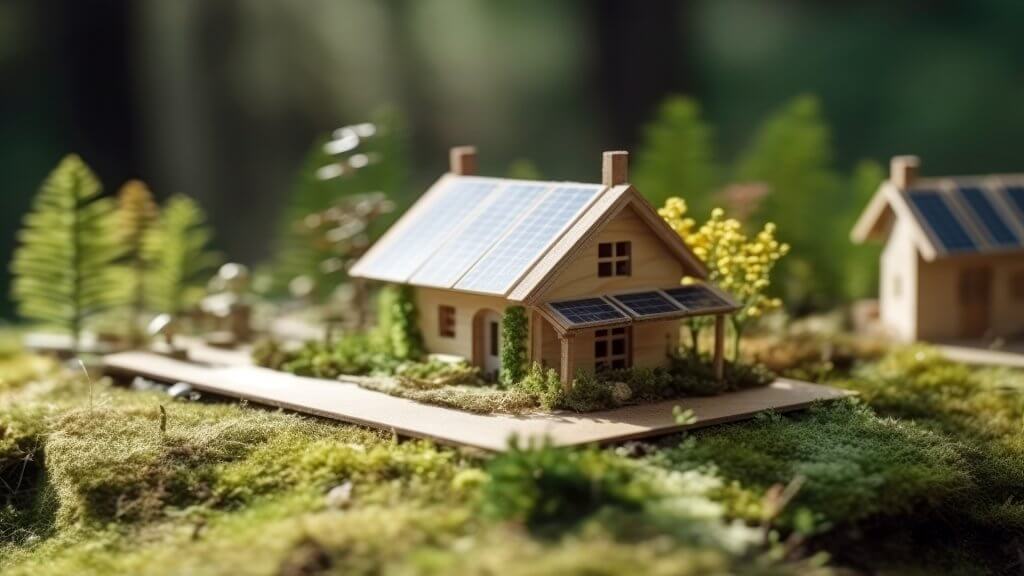
Sustainable Living: Embracing Green Energy Solutions for Home
As the world shifts towards sustainable practices, adopting green energy solutions for home becomes a transformative step. From renewable energy sources to energy-efficient technologies, creating a green energy home is not only environmentally conscious but also economically beneficial.
Renewable Energy Sources: The Foundation of Green Living
At the core of a green energy home are renewable energy sources. Solar power, wind energy, hydroelectric power, and geothermal energy offer eco-friendly alternatives to traditional fossil fuels. By harnessing the power of nature, homeowners can generate electricity sustainably, reducing their carbon footprint and dependence on non-renewable resources.
Solar Power: Capturing the Energy of the Sun
Solar power stands out as a prominent and accessible source of renewable energy. Solar panels, installed on rooftops or in solar farms, capture sunlight and convert it into electricity. The advancements in solar technology have made it more efficient and affordable, making it a cornerstone of creating a green energy home.
Explore Green Energy Home: Green energy home
Wind Energy: Tapping into the Power of the Breeze
Wind energy is another robust option for a green energy home. Wind turbines, strategically placed in wind farms, convert the kinetic energy of the wind into electricity. As the wind industry continues to grow, homeowners can explore the possibility of incorporating wind energy solutions to complement their green energy initiatives.
Hydroelectric Power: Harnessing the Flow of Water
Hydroelectric power utilizes the energy of flowing water to generate electricity. Dams and turbines convert the kinetic energy of water into electrical power. While large-scale hydroelectric projects are common, smaller-scale solutions, such as micro-hydro systems, can be implemented in some locations, contributing to the creation of a green energy home.
Geothermal Energy: Tapping into Earth’s Natural Heat
Green energy homes can benefit from geothermal energy, which harnesses the Earth’s internal heat. Geothermal heat pumps use the stable temperature beneath the Earth’s surface to heat and cool homes efficiently. With minimal environmental impact, geothermal energy is a reliable and sustainable choice for creating a green energy home.
Energy-Efficient Technologies: Optimizing Resource Consumption
Beyond renewable energy sources, incorporating energy-efficient technologies is fundamental to creating a green energy home. LED lighting, smart home systems, energy-efficient appliances, and advanced insulation contribute to minimizing energy consumption. These technologies enhance the overall sustainability of a home by optimizing resource use.
Government Incentives: Encouraging Green Initiatives
Governments worldwide recognize the importance of transitioning to green energy and often provide incentives to homeowners. These may include tax credits, rebates, and grants to encourage the adoption of renewable energy systems and energy-efficient technologies. Staying informed about available incentives can make the transition to a green energy home more financially viable.
Economic Benefits of a Green Energy Home
Creating a green energy home extends beyond environmental considerations; it also offers economic advantages. While the initial investment in renewable energy systems and energy-efficient technologies may seem significant, the long-term savings on energy bills and potential government incentives make it a financially sensible choice.
Sustainable Building Practices: Green Homes from the Ground Up
Building or renovating a home with sustainable and green practices in mind is integral to creating a green energy home. Green building practices may include using eco-friendly materials, optimizing energy-efficient designs, and incorporating natural lighting. These practices contribute to reducing the environmental impact of the home.
Individual Actions: A Collective Impact
Creating a green energy home is not limited to large-scale initiatives; individual actions play a crucial role. Homeowners can make conscious choices such as reducing energy waste, practicing water conservation, and embracing a sustainable lifestyle. These individual actions, collectively adopted, contribute to a broader impact on sustainable living.
In conclusion, creating a green energy home involves a holistic approach that combines renewable energy sources, energy-efficient technologies, and sustainable living practices. To embark on your journey towards a green energy home, visit Green Energy Home and discover the possibilities of sustainable and eco-friendly living.
